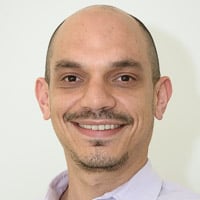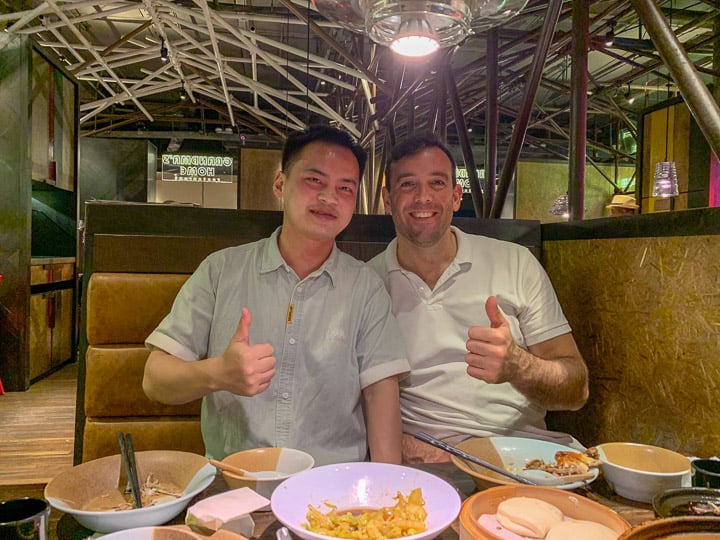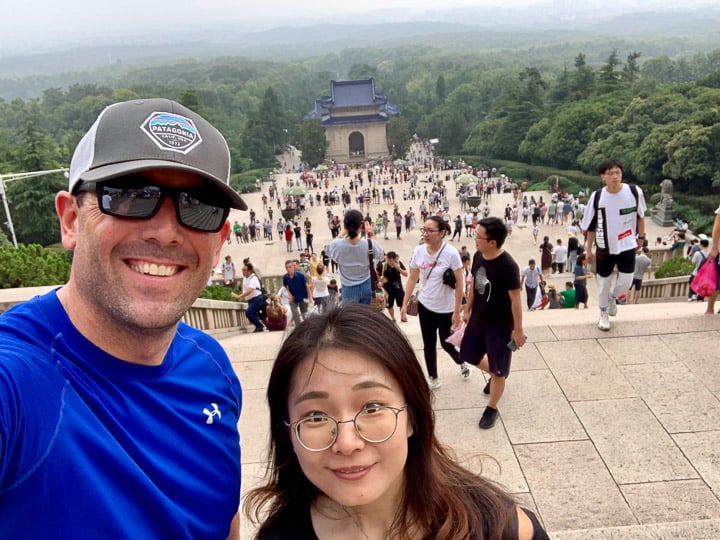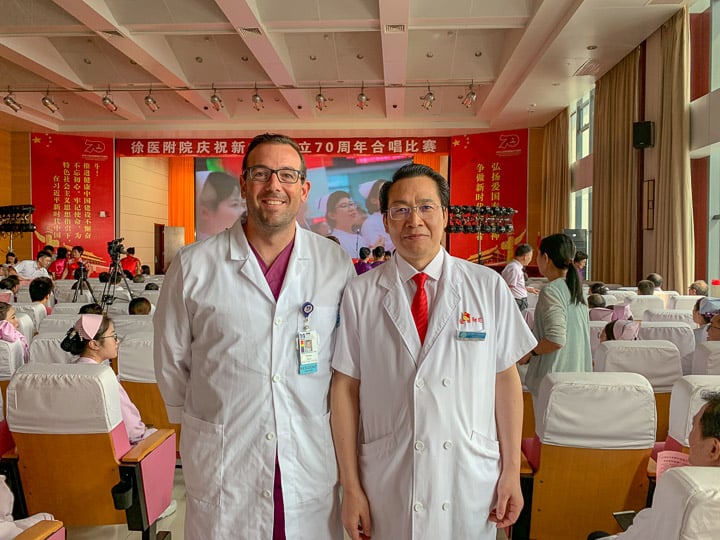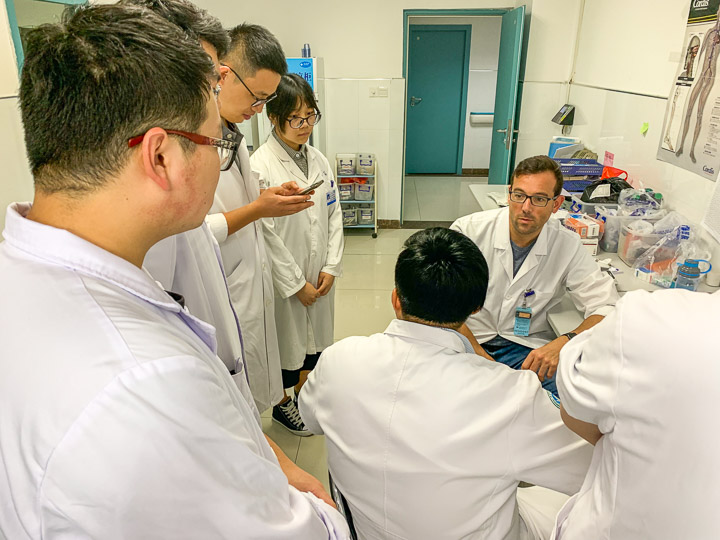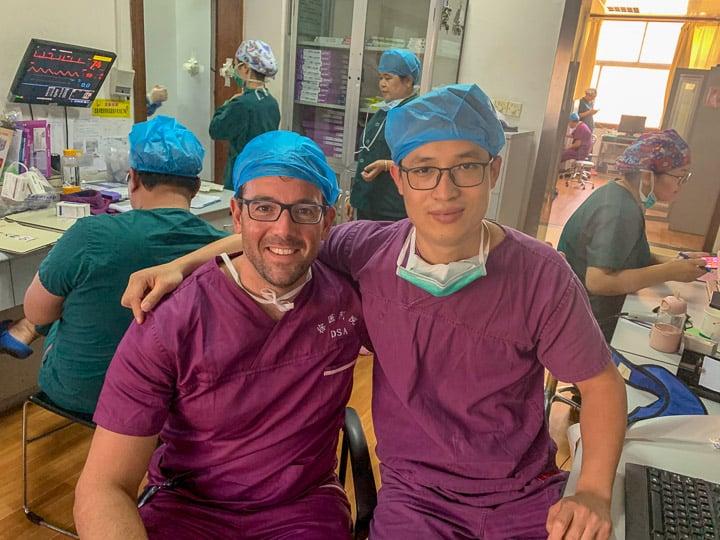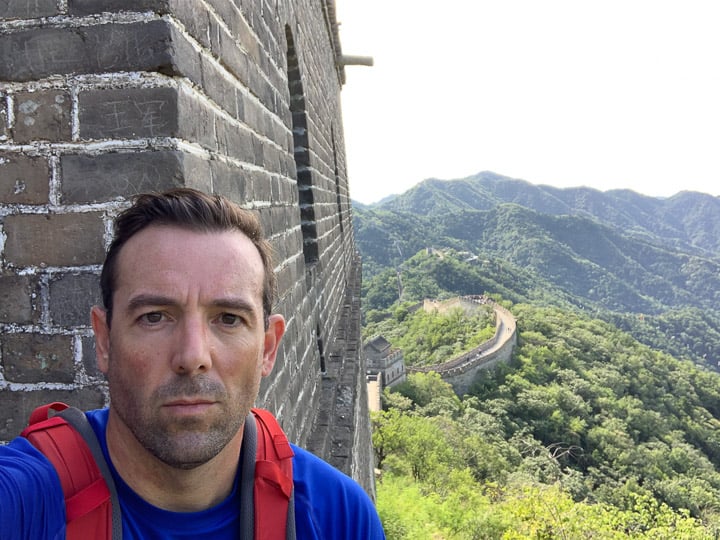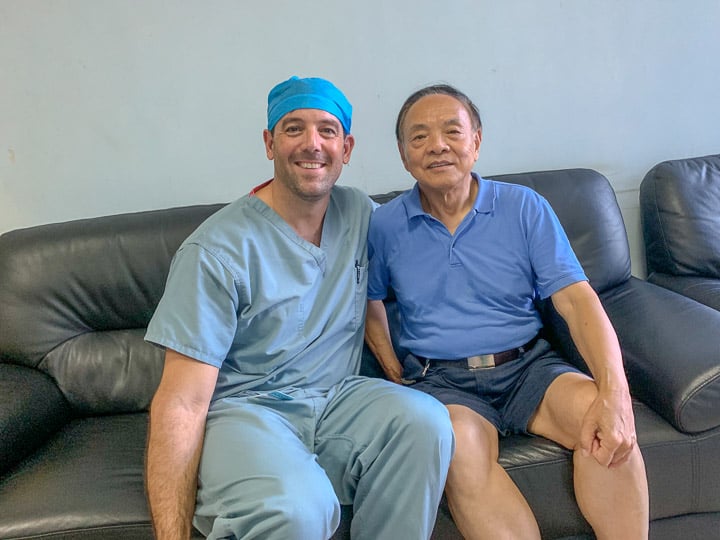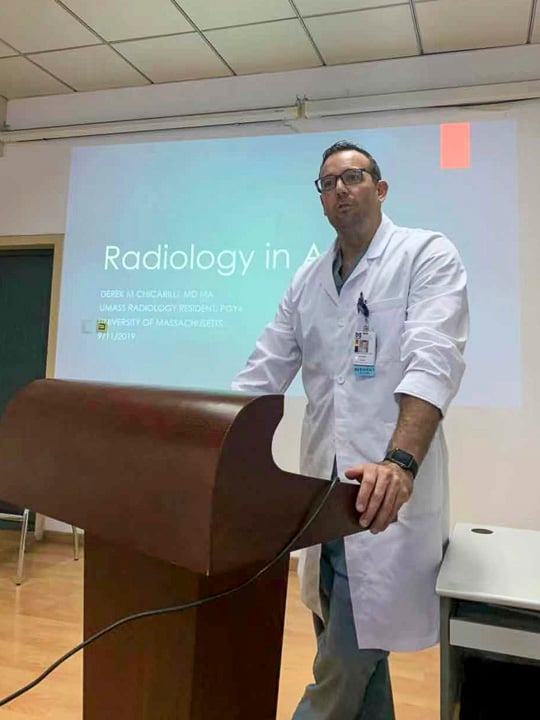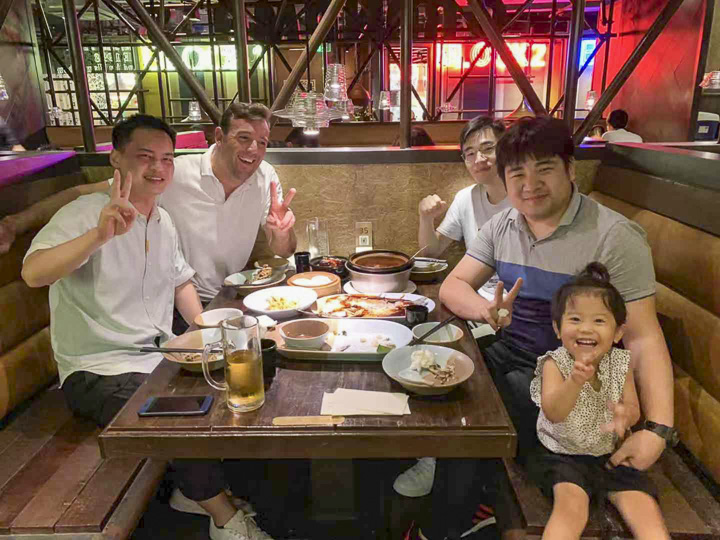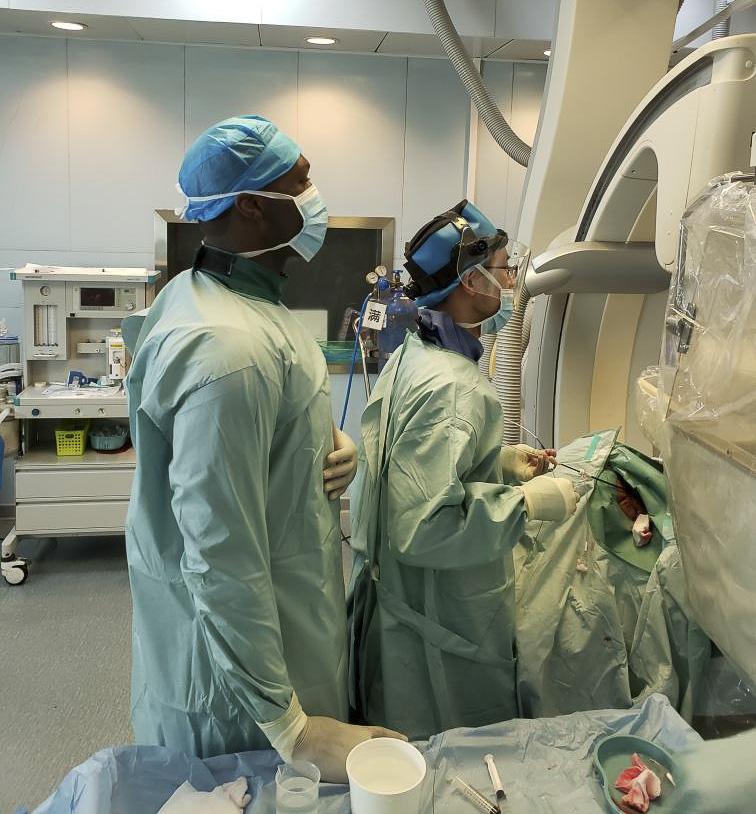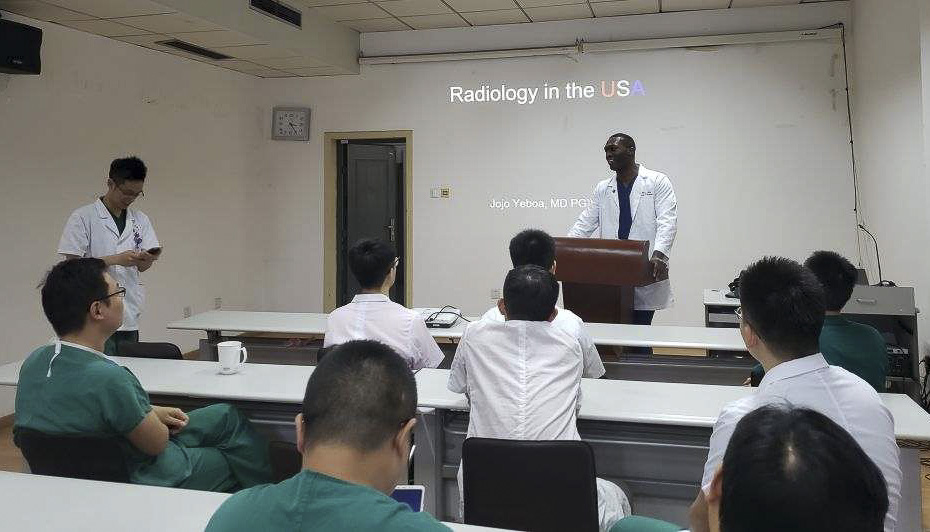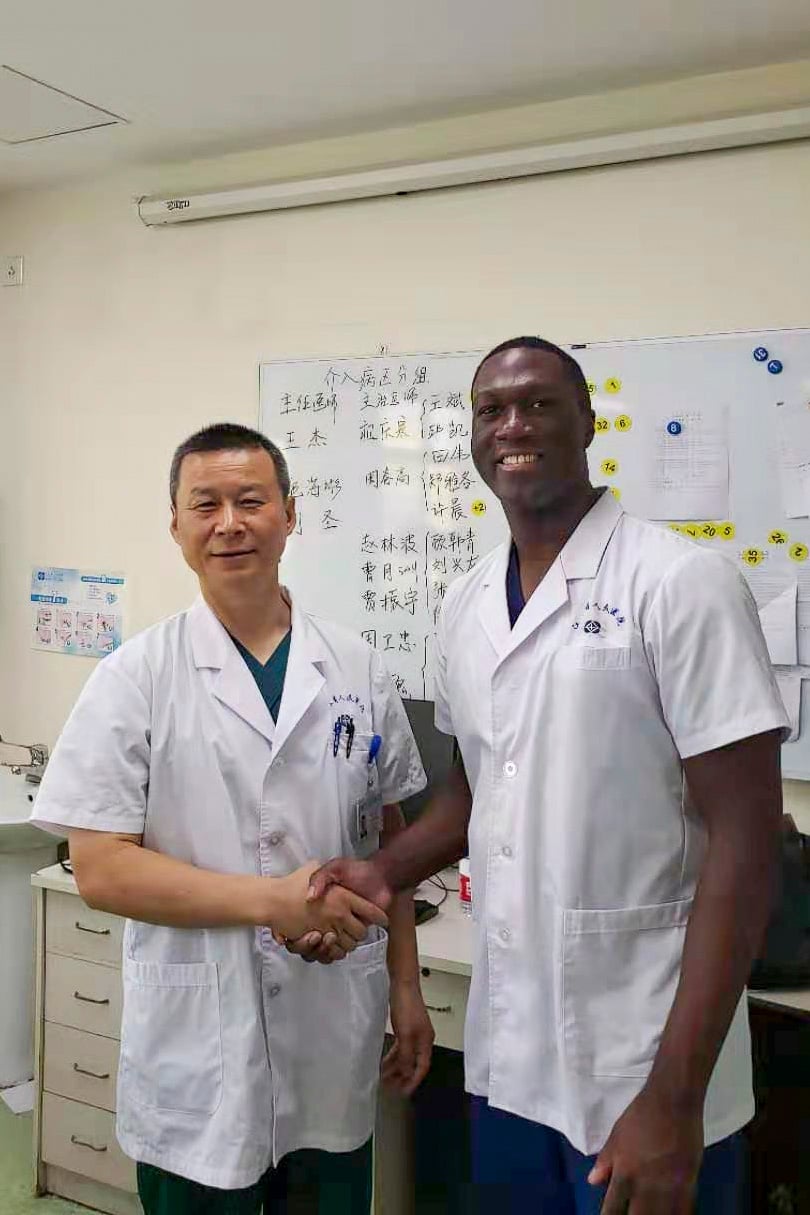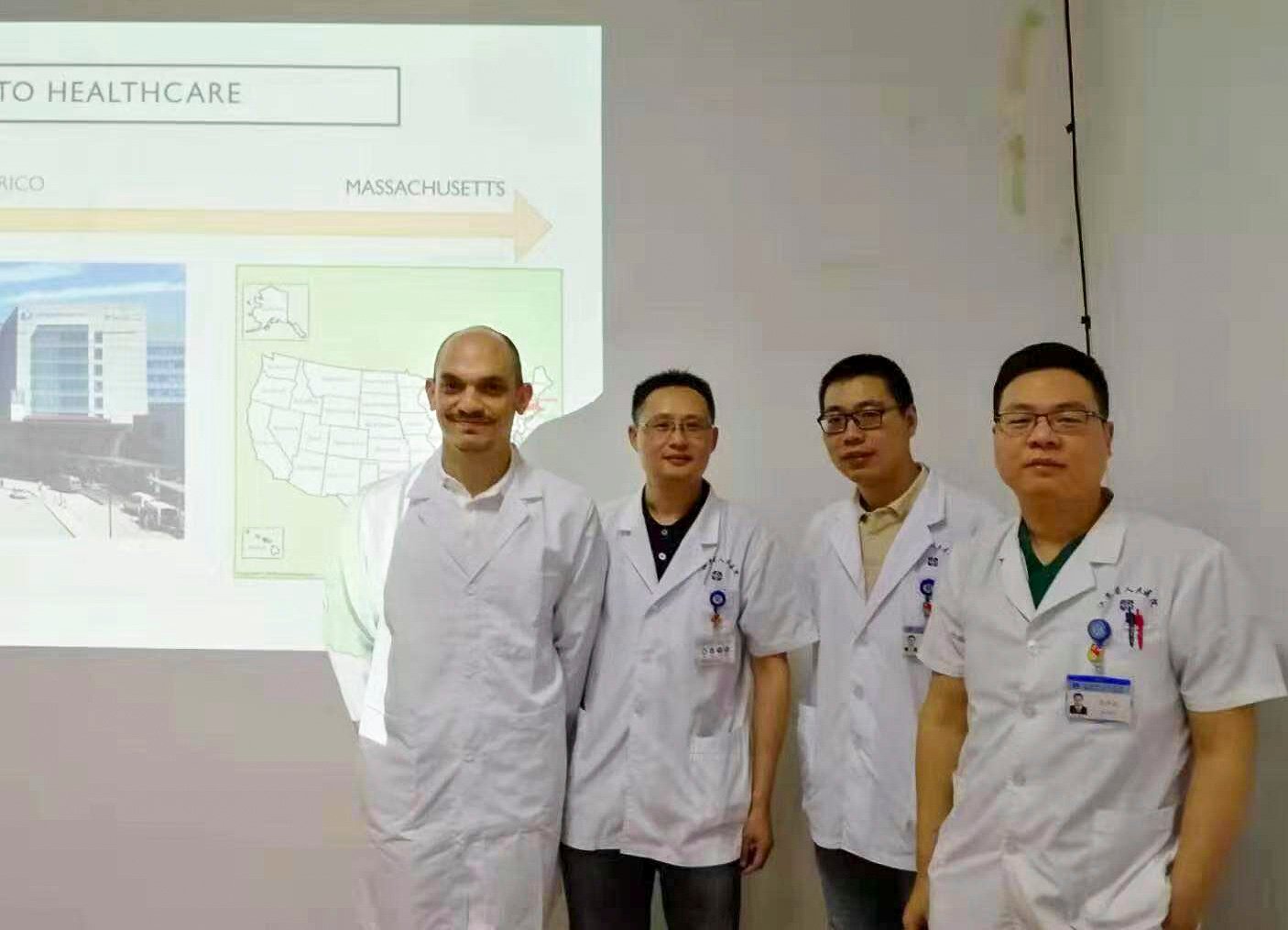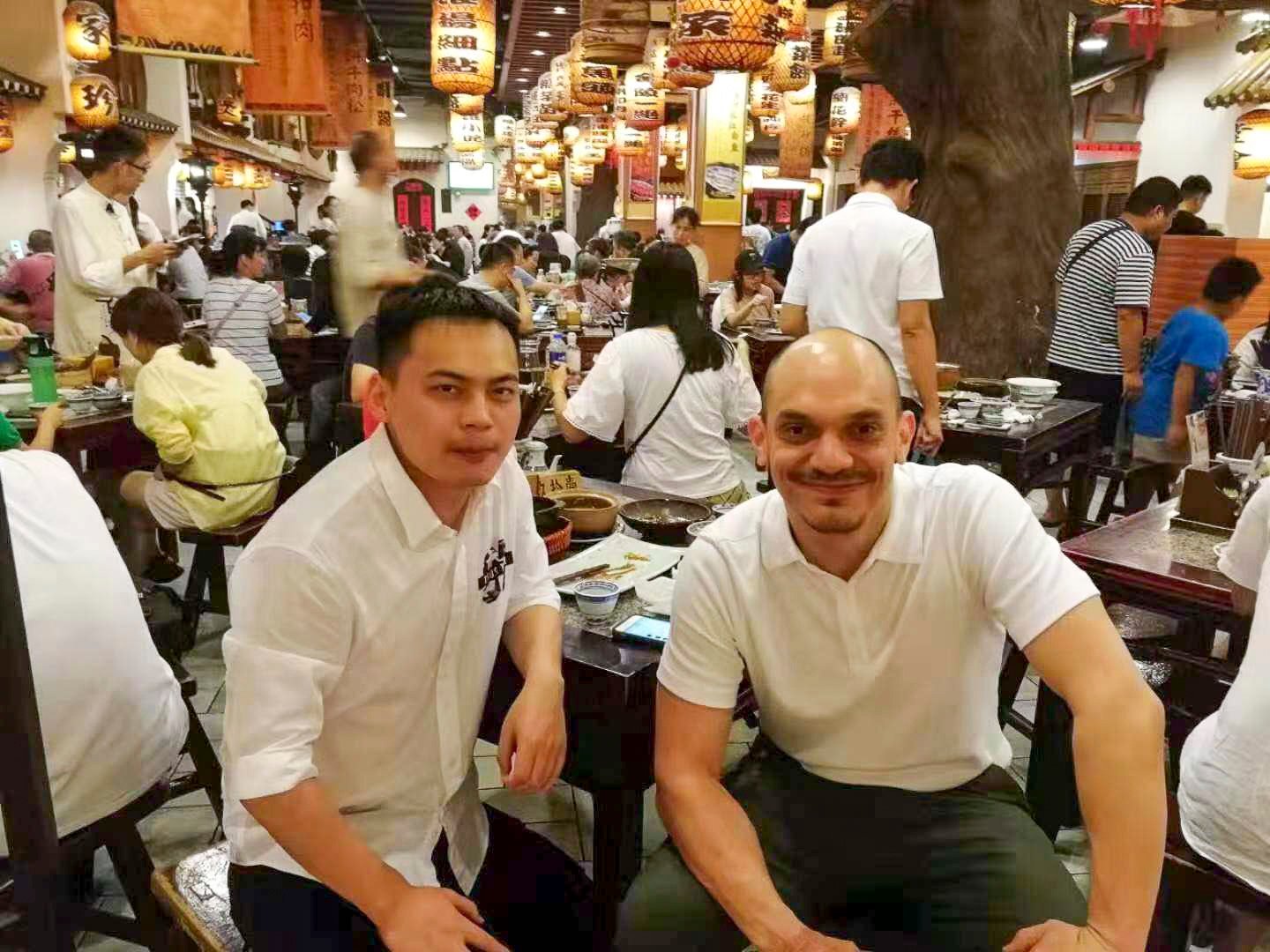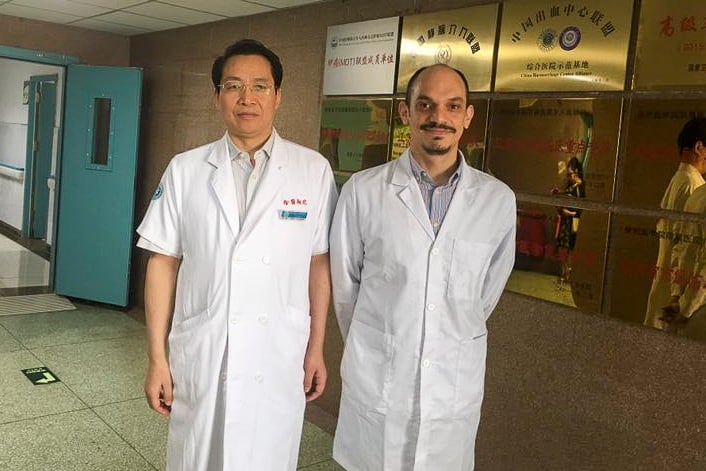Residents Travel to China
Three Radiology residents traveled to China during the past few months Jojo Yeboa, MD, Roberto Kutcher-Diaz, MD and Derek Chicarilli, MD. They visited hospitals, worked with radiologists in Nanjing and Xuzhou, observed various interventional procedures and learned about the management of patients with Budd Chiari Syndrome, which has a high incidence in Jiangsu Province in China. This is an ongoing international collaboration between UMass and partner hospitals in Jiangsu Province in China (Jiangsu Province Hospital The First Affiliated Hospital of Nanjing Medical School and The Affiliated Hospital of Xuzhou Medical School).
Travel memos from the residents:
 Jojo Yeboa
Jojo Yeboa
It was my honor and privilege to visit the Jiangsu province of China for the Budd-Chiari Syndrome (BCS) field research study. Budd-Chiari syndrome, as it’s classically described, is occlusion of the hepatic veins and/or IVC by thrombus or membranous webs. Due to the unusual prevalence of BCS in eastern China, this international program provided a unique opportunity to study a disease process that is rare in the United States. Under the mentorship of Dr. Young Kim from UMass, Dr. Hai-Bin Shi from Nanjing, and Dr. Hao Xu from Xuzhou, a collaborative partnership was developed. Together, we have worked to investigate BCS in China and build a cultural bridge between our radiology departments.
Traveling to China to study BCS and experience the practice habits of radiology and interventional radiology there was the experience of a lifetime. My hosts were very kind to me and I made many friends and mentors who I hope to stay in touch with and see again someday. I look forward to analyzing the data I collected and publishing in a peer-reviewed journal soon. I would like to especially thank Drs. Kim and Rosen for supporting and guiding me throughout the experience, and hope many more residents have the same opportunity to conduct BCS research in China.
Roberto Kutcher
Traveling across the world to learn how diagnostic and interventional radiology is practiced in another country has been one of the highlights, not only of my residency at UMass, but of my medical education. I had the opportunity to not only learn new techniques but critically appraise and contextualize our own.
In Xuzhou, where I spent two weeks, I also rotated with the interventional department. Although rare in the US and Europe, there is a very high incidence of Hepatic Vena Cava BCS in Xuzhou. During this period, I observed over 10 interventions and many more admitted patients with this disease. Under the leadership of Professor Zu and Professor Xu, the IR department at Xuzhou has pioneered many techniques and developed new tools for the treatment of BCS. It was a privilege to learn from innovative Interventional Radiologists who have contributed to the IR armamentarium.
I hope this program will be an enduring part of the UMass radiology residency and will afford future trainees the incomparable learning experiences which I have been fortunate to enjoy.
Derek Chicarilli
I had the privilege of traveling to China’s Jiangsu province to the capitol Nanjing, and developing suburban city of Xuzhou for a joint research fellowship between UMass and The Affiliate Hospital of Xuzhou Medical School. A major impetus for my career switch to medicine was a medical mission trip in which I participated that took me to a remote island province in the Philippines. I learned that the language of medicine, and more importantly healing, is universal. Entering residency, an international opportunity, in almost any capacity, was something that I sought and the BCS research fellowship did not disappoint.
It was an honor and pleasure to work alongside the wonderfully talented interventional radiologists in both Nanjing and Xuzhou. BCS is a prevalent issue in the Jiangsu Province that is not going away and claims the lives of too many people each year, including children. While the sequela of the disease (i.e cirrhosis, HCC) are devastating, not yet understanding the cause of this disease and attempting to prevent it is even more frightening. More work and research needs to be done in this collaborative effort to try and uncover the underlying cause of MOVC and SOVC in order to slow the growing prevalence of this deadly disease.
On behalf of Drs. Kutcher-Diaz and Yeboa, I would like to thank Drs. Rosen, Kim, Shi, and Xu for allowing me to participate in this wonderful program, and hope that many future UMass residents get to continue the work.


